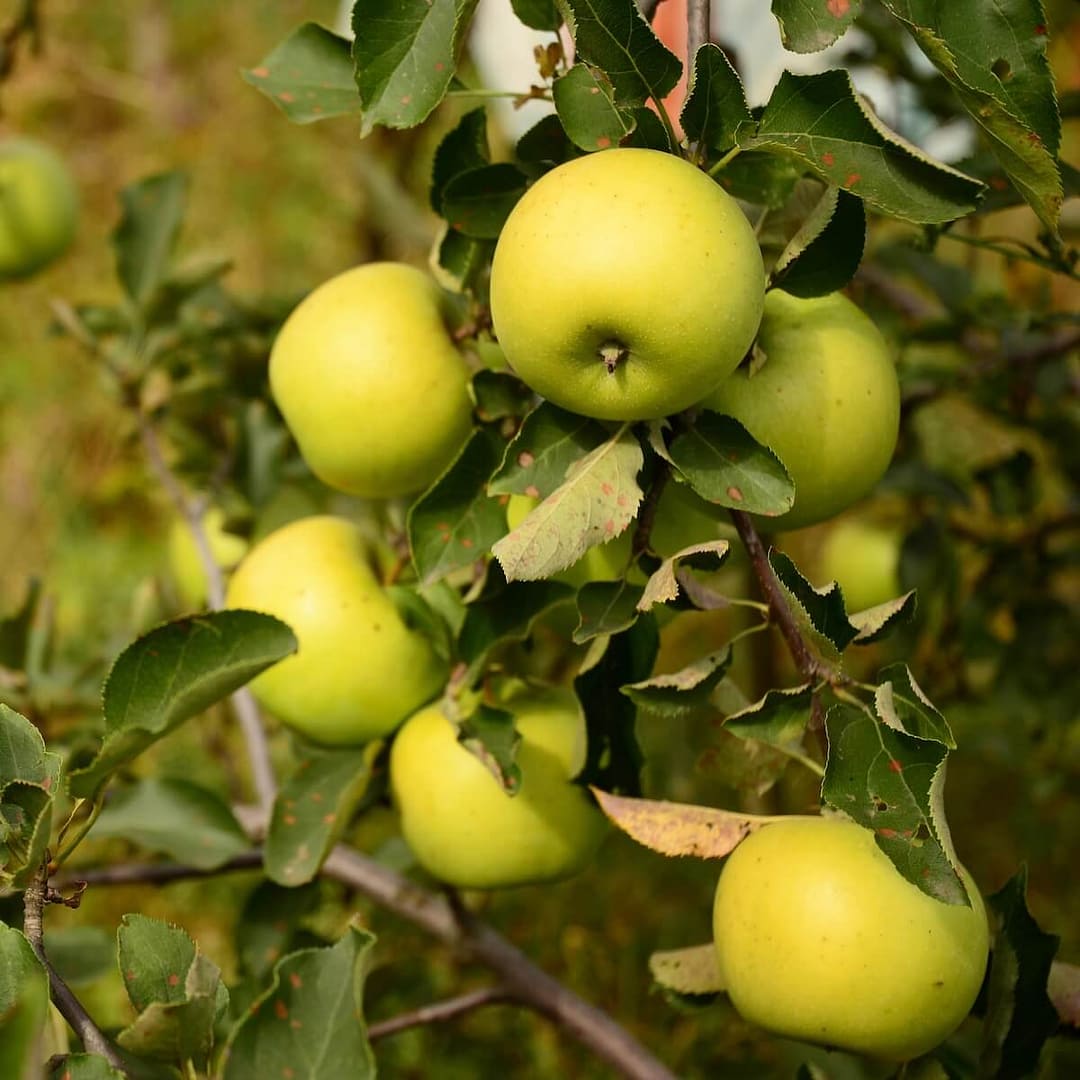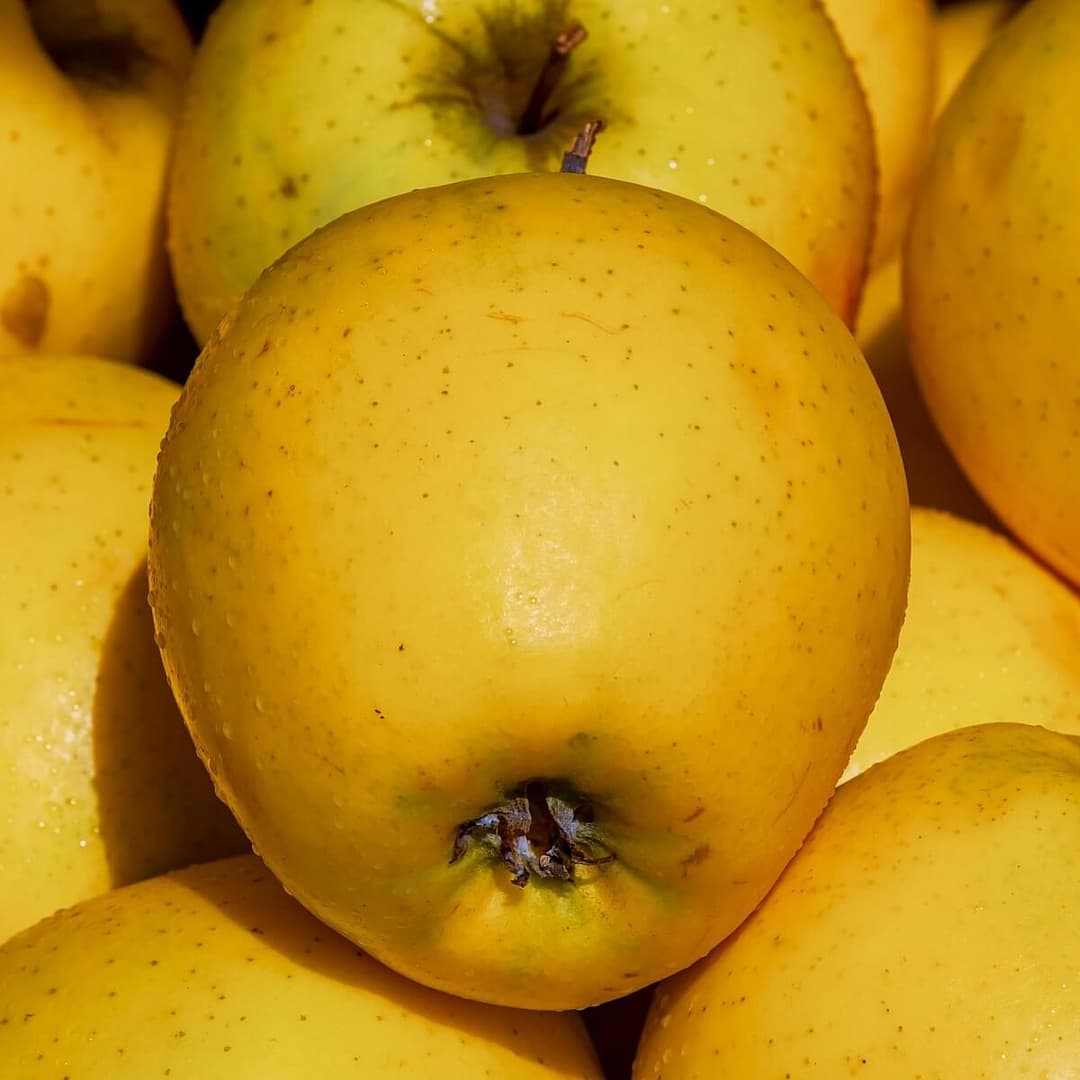
Position
- Requires a warm, sunny, and sheltered position for the best fruiting and flavour development
- Avoid frost pockets and exposed windy areas to protect blossoms and young fruit
- A south-facing spot is ideal to maximise sunlight exposure
Hardiness
- Hardy to temperatures as low as -15°C (5°F), suitable for UK winter conditions
- Heavy frost during spring may damage blossoms, so avoid planting in low-lying areas prone to late frosts
Soil
- Prefers moist, well-drained soil, rich in organic matter, to support healthy growth and fruiting
- Thrives in loamy soil but adjusts well to sandy or clay soils if amended appropriately
- Suited to neutral to slightly acidic soils, though it can tolerate slightly alkaline soils
- Optimal pH range is around 6.0 to 7.0
- Grab a soil test kit and ensure the perfect conditions for growth
Height
- Reaches an average height of 3-4 metres (10–13 feet) on semi-dwarfing rootstocks
- Final size depends on pruning practices and specific rootstock used (e.g., MM106 or M26)
Seasons of Interest
- Flowering: Produces fragrant white-pink blossoms in mid to late spring (April to May), attracting bees and other pollinators
- Foliage: Leaves appear lush green during the growing season; in autumn, foliage turns yellow before falling
Additional Notes
- Pollination: Partially self-fertile but benefits from a pollination partner. Plant alongside other apple trees (Pollination Group 4)
- Crop: Produces sweet, crisp, golden-yellow apples ideal for desserts. Harvest from October; fruits store well into winter
- Pruning and Maintenance: Requires regular pruning in winter to encourage airflow and remove damaged or overcrowded branches
- Watering: Provide consistent watering during dry spells, especially in its early years. Overwatering should be avoided
- Pest Resistance: Moderately resistant to some diseases but susceptible to scab in wet climates, so consider a protected planting site
Apple Golden Delicious Guide: From Planting to Picking
Golden Delicious apples are one of the world’s most popular varieties, known for their sweet flavour, crisp texture, and versatility. Whether you enjoy them fresh, in salads, or as part of a colourful fruit salad, this classic dessert apple is a fantastic addition to any garden. If you’re considering growing a Golden Delicious apple tree, this guide will take you through everything you need to know, from planting and care to harvesting and storage.
What Makes the Golden Delicious Apple So Popular?
Apple Golden Delicious has stood the test of time for a reason. This American apple, first discovered in West Virginia, has a sweet, mild flavour and a crisp bite. Unlike some apple varieties, it stores well, making it a favourite for home growers and commercial orchards.
The ‘Golden Delicious’ variety is also highly adaptable, thriving in various climates. It’s partially self-fertile, meaning it can produce fruit independently but benefits from a pollinator such as ‘Gala’ or ‘Jonagold’ for a better crop. Whether you’re looking for a dessert apple or one that works for cooking, Golden Delicious is an excellent choice.
How to Grow a Golden Delicious Apple Tree
If you want to grow and harvest your Golden Delicious apples, getting the planting conditions right is essential.
Choosing the Right Location
Apple trees grow best in a sheltered, sunny position with well-drained soil. Without suitable conditions, the tree may struggle to produce the best apples. The rootstock used determines the plant size, with MM106 and M26 being popular choices for garden trees.

Preparing the Planting Hole
Caring for Your Apple Tree
What Does a Golden Delicious Apple Taste Like?
This apple variety is so popular because of its excellent flavour. The fruit has a sweet apple taste with a hint of honey and is perfect for eating fresh. When fully ripe, the skin turns green-yellow, occasionally blushing to red if grown in a particularly sunny spot.
The taste and characteristics of the Golden Delicious make it an excellent choice for dessert and cooking. This apple is incredibly flexible, and you can use it in apple sauce, apple butter, or as part of a versatile garden variety of dishes
When and How to Harvest Golden Delicious Apples
Golden Delicious apples are ready for harvesting in autumn. For the best flavour, pick them when they are fully ripe. When exposed to full sun, the fruits redden slightly, but they remain a classic yellow delicious colour.
Storage and Preservation
One advantage of Golden Delicious apples is that they store well. To extend their shelf life, keep them in a cool, dry place. If stored correctly, they can last for months without turning brown or losing flavour.
Pollination and Companion Trees
Golden Delicious apple trees belong to pollination group 4, which benefits from having another variety nearby. While they are partially self-fertile, planting pollinator trees such as ‘Elstar’ and ‘Rubinette’ can help improve fruit production. Please check out my article here for more information on Apple pollinating groups.
Common Pests and Diseases
Like many apple trees, Golden Delicious is susceptible to certain pests and diseases. Apple scab can affect the fruit’s appearance, and canker can damage the tree if left untreated. Regular pruning and keeping the ground moist but not waterlogged can help maintain tree health.
Why You Should Consider Growing Golden Delicious
If you’re looking for a reliable and delicious apple variety, consider Golden Delicious. This classic dessert apple is easy to grow, produces a good crop, and offers a sweet flavour that works well for eating and cooking.
From Darren’s Patch
I don’t currently grow Golden Delicious in my patch, but I can see the appeal. It’s one of those varieties that has earned its place in gardens worldwide—reliable, productive, and sweet. Suppose you’ve got the space and want a versatile apple for the fruit bowl and the baking tray. I especially like that it stores well, making it a good option for anyone who wants apples well into winter. While I lean toward sharper varieties, I always appreciate how Golden Delicious holds its flavour and texture long after picking. If you enjoy a mellow, honeyed apple, you won’t go wrong with this one.
![]()
Key Points to Remember:
- Golden Delicious is one of the world’s most popular apple varieties, known for its sweet flavour and versatility
- It is easy to grow in well-drained soil and a sunny position
- The tree is partially self-fertile but benefits from a pollinator such as ‘Gala’ or ‘Jonagold’
- The apples store well and can last for months if kept in the right conditions
- Regular pruning, mulching, and watering will ensure a healthy and productive tree
Whether planting fruit trees for the first time or expanding your orchard, the Golden Delicious apple tree is a fantastic addition. A reliable and versatile variety for UK gardens.
To see the RHS article, please click here.
Want to learn about other apple varieties? Read about Apple Gala here.
For more information on Fruit for your garden, please click here.
Frequently Asked Questions
Q: What are the taste and characteristics of Golden Delicious apples?
A: Apple Golden Delicious is known for its sweet, mild flavour and crisp texture. They have a green-yellow colour and are less tart than other popular varieties, such as Red Delicious or Grimes Golden. These qualities make them excellent eating apples!
Q: What are some growing tips for planting a Golden Delicious apple tree?
A: When planting your Golden Delicious apple tree (Malus domestica), choose a sunny location with well-drained soil. Before planting, mix in some well-rotted manure or garden compost to enrich the soil. This will help your tree establish strong roots and produce a healthy crop of apples.
Q: Do Golden Delicious apple trees need a partner tree for pollination?
A: Golden Delicious apple trees require a pollination partner to produce fruit. Planting them alongside other compatible apple varieties such as ‘Gala’ or ‘Jonagold’ will ensure successful cross-pollination, leading to a more abundant harvest.
Q: How long does it take for Golden Delicious apples to ripen?
A: Golden Delicious apples typically ripen from late summer to early autumn, usually around the end of September. Keep an eye on their colour and texture—when they turn a rich green-yellow and feel slightly soft, they’re ready to pick!
Q: Can I use Golden Delicious apples in salads?
A: Absolutely! Their sweet and mild flavour makes them a fantastic addition to salads. Slice them up and toss them with fresh greens for a delicious crunch, or pair them with cheese and nuts for a tasty combination.
Q: Are Golden Delicious apple trees frost-tolerant?
A: Golden Delicious apple trees have good frost tolerance, making them an excellent choice for many gardeners. However, young trees should be protected from severe frost during their first few years to help them establish strong growth.
Q: What kind of maintenance do Golden Delicious apple trees need?
A: Regular maintenance includes watering during dry spells, especially when the ground is dry. Feeding the tree in spring with a balanced feed will support healthy growth and fruiting. Pruning is also essential—shape the tree by keeping the strongest side branches and maintaining good air circulation for healthy development.
Q: How do I know when to harvest Golden Delicious apples?
A: Harvest your Golden Delicious apples when they have a green-yellow colour and feel slightly soft to the touch. They’re ready to enjoy if they come off the branch easily with a gentle twist!
Q: Are there any pests or diseases to watch out for with Golden Delicious apple trees?
A: Like many apple varieties, Golden Delicious trees can be affected by pests such as aphids and diseases like apple scab. To keep your tree healthy, regularly inspect it and take preventive measures, such as good garden hygiene and organic sprays.
Q: Where can I buy a Golden Delicious apple tree?
A: Golden Delicious apple trees are available at garden centres and online retailers. For the best results, choose a strong, healthy tree suited to your growing conditions.
